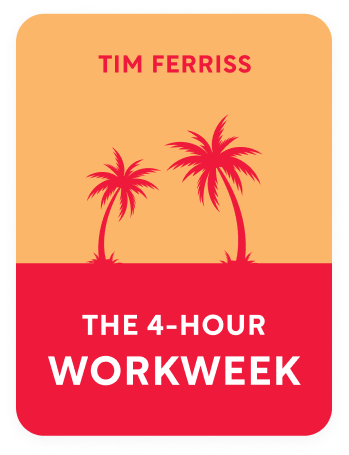

This article is an excerpt from the Shortform book guide to "The 4-Hour Workweek" by Tim Ferriss. Shortform has the world's best summaries and analyses of books you should be reading.
Like this article? Sign up for a free trial here .
Do you want to know how to achieve your dreams in life? Is there a way to start living your dreams right now?
In Tim Ferriss’s The 4-Hour Workweek, he explaining how you can work less and do more to achieve your goals. With this advice, you can learn how to achieve your dreams in life.
Read more about The 4-Hour Workweek and how to achieve your dreams in life.
How to Achieve Your Dreams in Life
Learning how to achieve your dreams in life doesn’t have to be difficult. First, you need to be able to define those dreams and know what you want. Then, you can map out those dreams and how you plan to achieve them.
The Perils of Not Knowing What You Want
If we don’t know what we want, we can fall into two traps: adhering to conventions, or trying to buy certainty.
The first trap is adhering to conventions. If we haven’t come up with an alternative to a conventional lifestyle, it’s hard to avoid it. As children, we’re allowed to dream, but as we grow up, people tell us to be practical and realistic. We’re told we should make choices that will allow us to live the conventional lifestyle of holding down a good job, starting a family, and buying a sports car. But you don’t want to be the kind of person who settles for boredom and the status quo. Becoming this kind of person should be scarier than anything else you might do.
The second trap catches us when we don’t know what we want. Until we figure it out, we decide to work until we have enough money to do anything and everything. If you haven’t decided on a use for your money, you’ll keep trying to get more so that when you do figure out what you want, you’ll have enough. You’re trying to use money to buy certainty. For example, the author’s company, BrainQUICKEN LLC, reached a point where it could run itself without any input for him. However, because he hadn’t come up with anything to do with his time, he kept working even though he didn’t need to.
“Dreamlining”
“Dreamlining” is a method for attaching timelines to dreams and is an important part of learning how to achieve your dreams in life. It’s similar to goal-setting but differs in these ways:
- The dreams are clearly defined.
- The dreams need to be unrealistic.
- The dreams are things that you will do in the time you have once you’re no longer spending it working.
There are seven steps to dreamlining:
1. Brainstorm dreams. The first step for knowing how to achieve your dreams in life is having dreams. Create two lists, one for a six-month timeline, one for 12-month. (The author sets even shorter timelines for himself, from three to six months, because the farther you try to project into the future, the more likely you are to procrastinate.) List up to five things you want to have, five you want to be, and five you want to do in each of those time periods. Don’t worry about how you would get any of these things; just focus on what you want. And be honest—don’t put things that would make you look good that you don’t actually want (for example, discovering the cure for cancer). If you get stuck:
- Think of something you don’t want, and then write the opposite.
- Ask yourself what you would do on a daily basis if you had $100 million.
- Consider what would make you really excited to wake up every morning.
- Choose a place to travel to, a bucket-list type item, a thing to do daily, a thing to do weekly, and a thing that you’ve always wanted to learn how to do. (The to-do things tend to be harder to come up with.)
2. Transform the “to be” list into to-dos by finding a specific action that would demonstrate what you’ve become.
- For example, if you want to be fluent in another language, your to-do could be to have a ten-minute conversation with a native speaker.
3. Prioritize your dreams. On the six-month list, choose your four most important and exciting dreams from all the columns. Do the same on the 12-month list.
4. Do some math: figure out the monthly cost of each of the four most important dreams (cost for classes, rent, and so on.). Think of things in terms of a monthly cost rather than a total cost. You can use the calculator on the author’s website to help.
- For example, for a one-time expense like a trip to Peru that costs $3000, on a 6-month timeline, it’s $500/month.
5. Do some more math: calculate your “Target Monthly Income (TMI).” Add up the monthly cost for each of your four dreams and add an extra 30% for safety or savings. This number is your TMI. You can also calculate your daily income. Probably, the amount is lower than you think, and it’ll lower further as you choose more things to do rather than things to have.
6. Come up with three steps to achieve each of your four dreams. The three steps don’t have to get you all the way to the goal; they’re simply designed to get you making progress. Your steps should be simple (doable in less than 5 minutes) and clearly defined. Step 1 should be doable right now, step 2, tomorrow, and step 3, the day after. The “tomorrow” and “next day” actions should be completed before 11 am on those days.
- For example, step 1 might be to do some research. Find an expert to talk to rather than doing your own research—it’ll be faster and you won’t get overwhelmed.
7. Do all the first steps right now. If you don’t do this step right now, you’ll put it off, and once you’ve done that, you’ll never do it. Use guilt to make yourself take steps—if you set a meeting with someone, you’ll feel bad about canceling it.
With this guide for how to achieve your dreams in life, you can begin dreaming bigger and learning how to reach your goals.

———End of Preview———
Like what you just read? Read the rest of the world's best book summary and analysis of Tim Ferriss's "The 4-Hour Workweek" at Shortform .
Here's what you'll find in our full The 4-Hour Workweek summary :
- The 4-step process to live a "retired" lifestyle now
- Find out if you're wasting the best years of your life working a 9-5
- How to create a business that makes you money without sucking up your time






